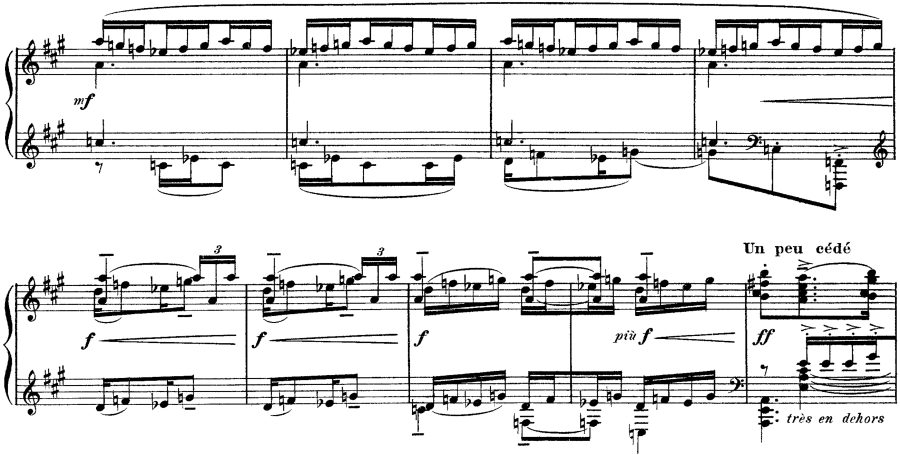Scale
| Why am I learning this? I doubt you need convincing of the importance of the diatonic scale. The pentatonic and acoustic scales similarly act as basic material for a lot of music. |
A scale is a series of notes used to build melodies and chords. The most common scales are the diatonic, pentatonic, acoustic, and a few symmetrical scales.
| Contents 1 History and etymology 2 Specific scales 2.1 Diatonic scale 2.2 Pentatonic scale 2.3 Acoustic scale 2.4 Symmetrical scales 3 Further reading 4 External links |
History and etymology
The musical term scale relates to the use of the word scale to mean ladder. Musicians around the world have used something very much like the diatonic, pentatonic, and acoustic scales for millennia. However, from ancient until early modern times, Western musicians thought more in terms of systems (sets of pitches covering about two octaves) than scales. To put it very simply, there was a hard system (with B natural) and a soft system (with B flat), and everything else was derived from these. With the emergence of tonal music, a sense of scale degree and hence scale arose.
Specific scales
Diatonic scale
The term diatonic scale can refer to the major scale or any of its modes (ways of stepping through the scale from different starting points):

For the purposes of tonal theory, the melodic and harmonic minor scale forms are also considered diatonic.
Pentatonic scale
The pentatonic scale is like major with missing fourth and seventh degrees:

Example: Camera Obscura, “This Is Love (Feels Alright),” from Desire Lines (2013): The melody uses the pentatonic scale. The melodic movement is free and easy.
Example: Claude Debussy, “La cathédrale engloutie,” No. 10 from Preludes, Book 1 (1910), mm. 16–24. The pentatonic scale conveys a sense of openness.
Acoustic scale
The acoustic scale has a raised fourth degree and a lowered seventh degree:

The acoustic scale is so called because it resembles the eighth through the fourteenth partials (acoustic components) of its tonic. It can also be regarded as the fourth mode of melodic minor.
Example: Sonny Rollins, “Blue 7,” from Saxophone Colossus (1956): Rollins seems to use Bb, Eb, and F acoustic scales to improvise over Bb, Eb, and F dominant seventh chords. The acoustic scale has the same notes as a certain extended dominant seventh chord, rearranged into steps.

Example: Claude Debussy, “L’isle joyeuse” (1904), m. 198ff. Eb and F acoustic scales are used jubilantly in mm. 200ff and 208ff.


Symmetrical scales
Main article: Symmetrical scale
The diatonic, pentatonic, and acoustic scales have a step pattern that does not repeat within the octave. For example, WWHWWWH for the diatonic scale cannot be split into equal parts. But symmetrical scales have a repeating step pattern. The chromatic, whole-tone, octatonic, and hexatonic scales are the most common symmetrical scales.
Further reading
- Stephen Kostka, Materials and Techniques of Post-Tonal Music, Chapter 2
- Miguel Roig-Francolí, Understanding Post-Tonal Music, Chapter 1
- Joseph Straus, Introduction to Post-Tonal Theory, Chapter 4
External links
The Wikipedia article on scales is informative. The history section of the separate article on the diatonic scale is inaccurate.
